What is sports concussion?
Sports concussions often occur in contact sports such as football, ice hockey, soccer and lacrosse, but they also occur in non-contact sports such as baseball, golf, and cheerleading. Most sports concussions don’t involve a loss or consciousness or a blow to the head, and many times, are overlooked by coaches and parents as they can be focused on the play. For most athletes, symptoms will resolve within two to four weeks, however for some, symptoms can persist for several months.
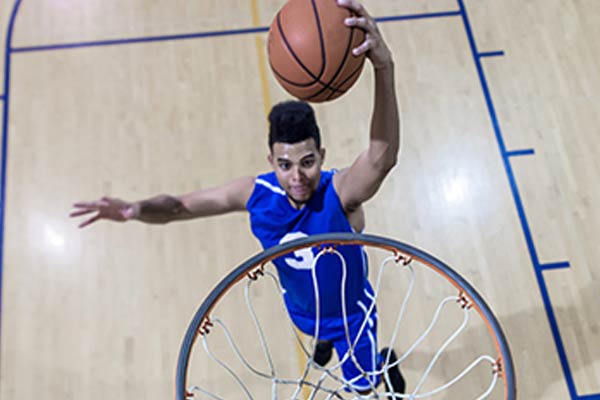
Safe Return to Play
If an impact or blow to the head is observed or suspected, and an athlete displays any of the above symptoms, they should follow the steps for a safe return to play.
LEARN THE STEPSWhat are the signs and symptoms?
What makes a sport concussion different from other concussions?
- Athletes want to get back to play as soon as possible and may disregard other symptoms.
- The risk for a second concussion is higher when young athletes return to practice or competition too soon.
- The NJ Concussion Law has certain requirements before a student athlete can return to practice or competition.
- Feel dazed or stunned
- Confusion
- Forgets plays or coaches instruction
- Uncertainty about opponents, time (e.g., which half, quarter), or score
- Alterations in coordination or clumsiness
- Gait or balance problems
- Shows personality, mood, or behavior change
- Forgets events prior to or after the impact
- Loss of consciousness
- Headache or pressure in the head
- Dizziness
- Balance Problems
- Nausea or Vomiting
- Sensitivity to light
- Sensitivity to noise
- Lethargy or fatigue
- Problems remembering
- Poor attention/concentration
- Not feeling right
- Slowed processing
- Numbness or tingling
- Sleep problems
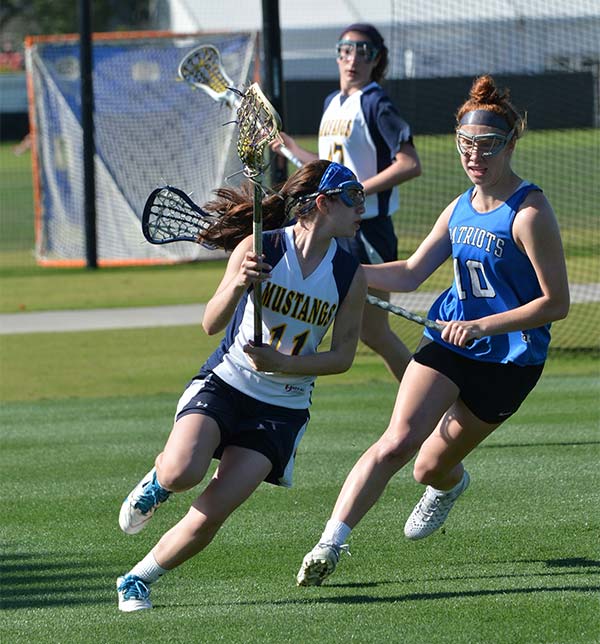
How to manage a sports concussion
A sports concussion is a medical diagnosis and should be evaluated and diagnosed by a physician. Athletes may report symptoms during the game or after, and sometimes days later. These symptoms should be taken as seriously as those reported on the day of the impact, and the athlete should be evaluated by a physician.
A doctor will review how the impact occurred, signs and symptoms, and medical history. They will also conduct a neurological examination which assesses vision, hearing, balance, coordination, and cognitive functions. Concussions should be managed by medical physicians and licensed healthcare providers who have specialized training in the management and treatment of concussion.
Cognitive and physical rest
The standard of care following a diagnosis of concussion is physical and cognitive rest. During the first few days of recovery, athletes who have sustained concussion should restrict physical AND cognitive activities that require attention and concentration, as they may exacerbate and possibly prolong overall recovery. It is expected that athletes who have sustained concussion who limit relevant physical and cognitive activities will not require further intervention and will recover spontaneously.
What limiting cognitive and physical rest looks like
- Student Athletes should be provided with a return to learn plan and a set of personalized academic accommodations to assist in their recovery. Some athletes may be unable to take tests every day, and homework and classwork can be completed as tolerated. They may be provided the ability to leave class early to avoid noisy areas or crowded hallways.
- Student Athletes should always be provided with documentation to remain out of gym and sports until they are fully cleared.
- Prolonged physical and cognitive rest can exacerbate symptoms and delay recovery! There is no need to try to fully restrict physical and cognitive activities after a concussion. Research indicates that physical exercise promotes recovery and this is especially evident for athletes.
- Once initial symptoms are manageable, light physical activity such as walking is often recommended. It is important to work with a healthcare provider to help athletes taper back into physical activities and usual day to day activities as soon as tolerated.
- Baseline testing measures cognitive functions such as memory, processing speed, and attention, prior to the start of a season.
- Healthcare professionals use baseline measures to compare post injury cognitive functions to baseline pre injury cognitive functions.
- At this time, widespread use of baseline testing is not recommended in children and adolescents given problems with reliability over time and insufficient evidence of their true value.
- Baseline measures may be helpful when administered properly and can add useful information to healthcare providers about making decisions about when it is safe to return to play.
- In some cases, a learning disability, developmental disorder, or psychological disorder may impact or impede computer testing. Students may be referred for neuropsychological paper and pencil testing to address similar measures found on the computerized testing.
Physical, emotional, cognitive, and sleep symptoms that persist beyond several months are often referred to as Post Concussion Syndrome (PCS). While we currently do not know whether persistent symptoms are the result of primarily medical or psychological causes, athletes diagnosed with PCS are referred to specialists with training in concussion such as neuropsychologists, neurologists, physical therapists, neuro-ophthalmologists, and cognitive rehabilitation therapists to help them recover.
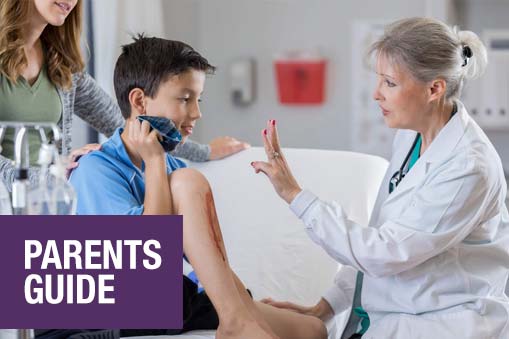
A Parent’s Guide to Concussion
Download BIANJ’s comprehensive concussion booklet, outlining the symptoms and causes of concussion, diagnosis, treatment, return to learn and play, personal stories, and more.
GET THE GUIDEWho gets involved?
| Parents/Families | Athletic Trainer/Coach | Professionals |
| Immediately take athlete to ER, Urgent Care, or medical provider | Immediately remove an athlete from play if concussion is suspected | Ensure concussion is fully documented |
| Monitor and track symptoms at home, educate yourself on symptoms and course of concussion recovery | Evaluate or refer the injured athlete to the athletic trainer or school physician | Work with medical team, AT, and parents to develop and implement a Return to Learn Plan and Academic Accommodations |
| Take athlete to appropriate healthcare professionals as recommended | Notify parents and explain concussion response and protocols | Ensure compliance with the Return to Learn and Return to Play plans |
| Ensure school receives medical releases and communicate regularly with the school to implement a Return to Learn Plan and Academic Accommodations | Notify identified educational professionals such as school nurse, guidance counselor or teachers | Communicate regularly until the athlete has completely recovered or initiate a 504 plan.* |
| Make any recommended accommodations at home, reassure your child that they will get better, emphasize the importance of following concussion recommendations | Work with healthcare providers to develop a return to play plan | When cognitive and or emotional problems persist, athlete should be evaluated by a neuropsychologist trained in concussion, when possible. |
| Provide final medical clearance to the athletic trainer and designated educational professionals | Follow a Gradual Return to Play Plan | Inform teachers, counselors and other identified staff of medical and academic clearances. |
| Continue to monitor and report signs or symptoms for the remainder of the season | Continue to monitor and report signs or symptoms for the remainder of the season | Continue to monitor and report signs or symptoms for the remainder of the season |
*A 504 plan is a blueprint for how the school will support a student with a disability and remove barriers to learning. The goal is to give the student equal access at school.
Community based youth sports programs are different from interscholastic sports in terms of organizational structure, accountability, and training coaches and staff. Keep in mind that often, the only adult in charge of a community-based sports event is often a volunteer parent.
Is concussion different in younger children compared to teens?
Yes, there are some differences. Younger children:
- may not have the language to describe symptoms.
- are more likely to complain they just “don’t feel good.”
- are more likely to act out behaviorally.
- are more likely to show developmental regression (e.g. potty training regression)
- might misbehave in response to cognitive overload or fatigue
- may not understand what a concussion is- teachers should communicate that a concussion is not contagious or life threatening.
Interscholastic sports are the focus of the NJ Concussion Law, which requires that school districts have a district-wide concussion policy.
Teen student athletes and concussions:
- Cognitive issues seem to take longer to resolve compared to younger children and adults.
- Sometimes student athletes may hide symptoms in order to get back to their sport.
- Student athletes tend to be high achievers and worry about falling behind in their schoolwork.
- Extra-curricular activities and homework keep students very busy, so prioritizing and reducing overall demands is important
- The high school student may be more likely to lose track of assignments or have difficulty planning how to approach school projects
- Good communication among school staff is helpful so that a student’s difficulties do not go unnoticed
- Peer relations are very important, and students can be overly sensitive to being different. They may try to minimize symptoms so as not to stand out
- The demands on executive functioning—such as setting goals and planning ahead—are much greater than in elementary school
Key points in the NJ concussion law:
- When a concussion is suspected the player must be pulled out of practice/competition.
- The player cannot return to sports until a physician states that there is no concussion or the concussion has resolved.
- Prior to beginning the Return to Play Protocol, the player must attend a full day of normal school activities without having any cognitive or physical symptoms.
- The player must complete the Return to Play Protocol.
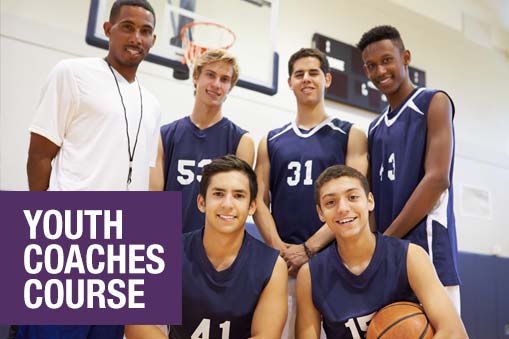
Youth Coaches Course
Parents and kids look to coaches as the experts. Do you have the information you need to support and guide them? Take a free one-hour course created in partnership with the Rutgers Youth Sports Research Council and BIANJ’s Concussion in Youth Sports Steering Committee.
REGISTER TODAY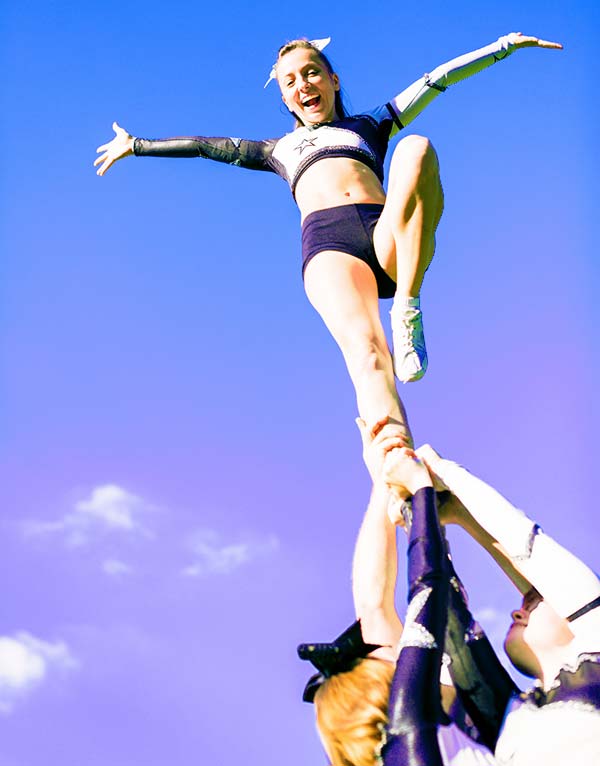
Prevention
A concussion is a brain injury. The only cure is prevention.
- Play by the rules. Great coaches teach players to respect the rules of their sport. Use the proper equipment and wear it properly.
- Always close a chin strap if your sport requires a helmet. Each sport or activity requires a different type of helmet.
- Check the playing field. Are there holes, digs, or divots? Are the end posts sufficiently padded? Practice good sportsmanship.
- Coaches and parents set the best examples; keep aggression off the field.
- Proper technique is essential.
- When in doubt–sit ’em out! Follow return to play guidelines. Concussions are cumulative, so it is important that individuals follow guidelines provided by their doctor or healthcare provider, and are fully healed before returning to their sport or activity.
Quick Facts on Prevention
- Helmets cannot prevent a concussion
- Concussions happen during practice too
- Concussions can happen from many other activities outside of sports
- Headbands and mouth guards do not prevent concussions
Return to Learn
Successful return to school requires good communications about symptoms, management of accommodations, and collaboration among physicians, school professionals, and the family.
Steps for Gradual Return to School
- Step 1: Home
The student should rest according to symptom intensity. Try school work gradually, and increase when symptoms do not increase. - Step 2: School Part Time
The student can take a few classes without pressure to participate, and should be excused from tests or homework. Breaks can be taken as needed. - Step 3: Initial Return to School Full Time
The student should take as many classes as are comfortable for them. Begin participating in some homework, and take breaks as needed. - Step 4: Later in Returning to School
The student can take fewer rest breaks, attend all classes, and attempt modified tests with extra time. - Step 5: Full Return to School
In the absence of symptoms, the student can attend all classes without breaks, participate fully in curriculum, and being making up missed work.
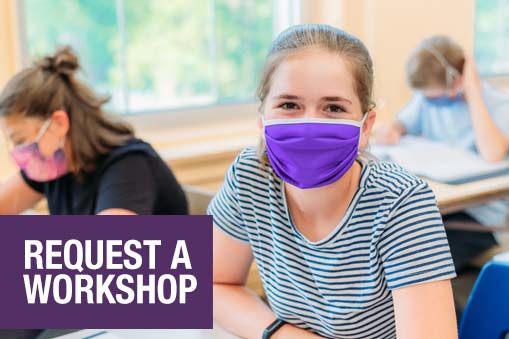
Request a Workshop
BIANJ offers customizable workshops for parents, teachers and coaches. Contact us today to get your school up to speed on concussion prevention, recognition, and treatment.
REQUEST A WORKSHOPReturn to Play
During the first few days of recovery, athletes who have sustained concussion should restrict physical activities. Once initial symptoms are manageable, light physical activity such as walking is often recommended.
Steps for Safe Return to Play:
- Step 1: Back to regular activities (such as school)
Athlete is back to their regular activities (such as school) and has the green-light from their healthcare provider to begin the return to play process. An athlete’s return to regular activities involves a stepwise process. It starts with a few days of rest (2-3 days) and is followed by light activity (such as short walks) and moderate activity (such as riding a stationary bike) that do not worsen symptoms. - Step 2: Light aerobic activity
Begin with light aerobic exercise only to increase an athlete’s heart rate. This means about 5 to 10 minutes on an exercise bike, walking, or light jogging. No weight lifting at this point. - Step 3: Moderate activity
Continue with activities to increase an athlete’s heart rate with body or head movement. This includes moderate jogging, brief running, moderate-intensity stationary biking, moderate-intensity weightlifting (less time and/or less weight from their typical routine). - Step 4: Heavy, non-contact activity
Add heavy non-contact physical activity, such as sprinting/running, high-intensity stationary biking, regular weightlifting routine, non-contact sport-specific drills (in 3 planes of movement). - Step 5: Practice & full contact
Young athlete may return to practice and full contact (if appropriate for the sport) in controlled practice. - Step 6: Competition
Young athlete may return to competition.
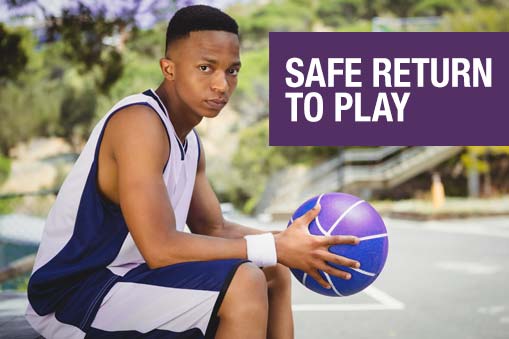
When in doubt, sit them out!
Athletes who return to play prior to fully recovering may be at risk for second impact syndrome. Parents should seek evaluation and management of sports related concussion by healthcare professionals who specialize in concussion.


